
Fine Homebuilding Project Guides
Finish & Trim Carpentry
Trusted, comprehensive guidance from the pros for creating perfect trim details in any room of the house
Finish carpentry is the collection of details in a home that turn basic boxes into beautiful rooms. This can include any visible woodwork that goes in after the drywall is done, including window and door casings, baseboard and crown molding, or paneling and coffered ceilings. The moldings in a home primarily cover up seams and create focal points, but they also help define the style of the home. Depending on homeowners' preferences and budgets, trim details can vary widely in their level of complexity and ornamentation. Regardless of their style, these details take patience and precision to execute. We've collected our best articles and videos by professional finish carpenters on everything from basic tips to complete instructions for advanced projects to help you create perfect trim details in your next remodel or new home.
Choose a Chapter
Search Guide-
Trim Design
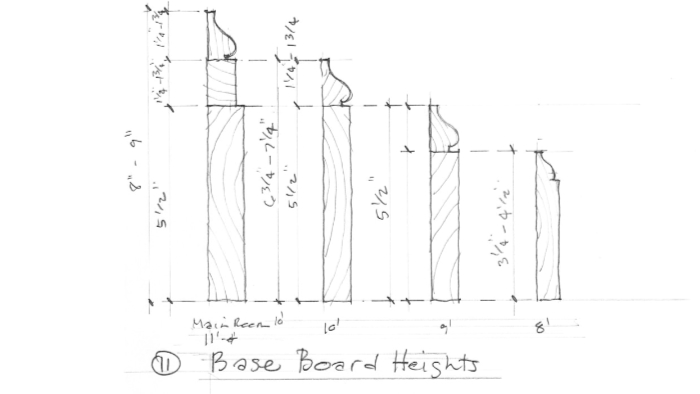
All well-executed finish carpentry projects start with a good plan, and choosing appropriate molding profiles and sizes should be at the heart of that plan. To help you in this quest, there are rules of thumb based on time-tested design principles, plus there are well-regarded precedents set by architectural styles from ancient times to the present. In this chapter, you will find useful insights from carpenters, architects, and other building professionals who have designed and installed beautiful, well-proportioned millwork in their projects, so you can do the same in yours.
-
Tools and Materials
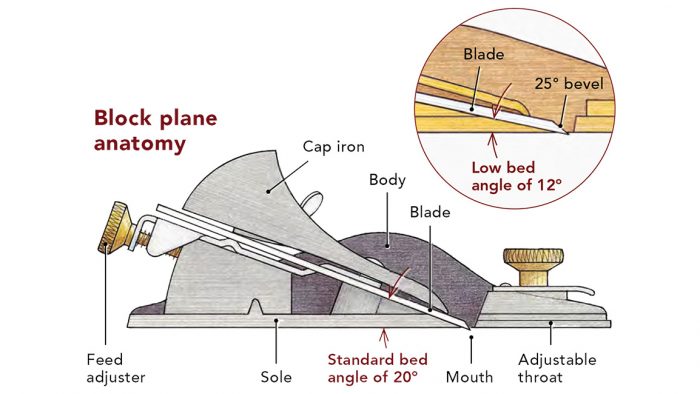
Most of the tools needed to perform trim carpentry work fall into a handful of categories: cutting, shaping, finishing, and fastening. The ideal tools for any particular carpentry job don't necessarily need to be fancy or expensive, but they should be of high quality, and they must meet the specific demands of the task at hand. Choosing the right materials is equally important. And your materials list will include more than the wood itself; there are also fasteners and adhesives to consider. We've compiled a number of overviews of carpentry tools and materials categories, plus reviews of specific products, to help you choose what you need to complete your finish carpentry work.
-
Interior Trim Basics
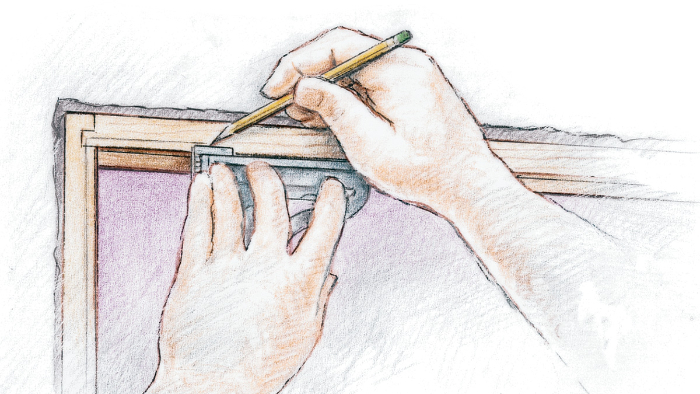
Whether you're a novice carpenter or a pro, there are always going to be new skills you can learn in order to improve your work, and we've curated a collection of articles and videos to help you do just that. In the first few articles, several experts share their favorite tips for planning projects, organizing job sites, executing fine details, and maintaining tools. Then you will find a number of articles clearly demonstrating essential skills that every trim carpenter should be proficient at. The chapter wraps up with a video series about several easy-to-use router jigs for creating arches, tapers, and other unique carpentry details.
-
Window and Door Casings
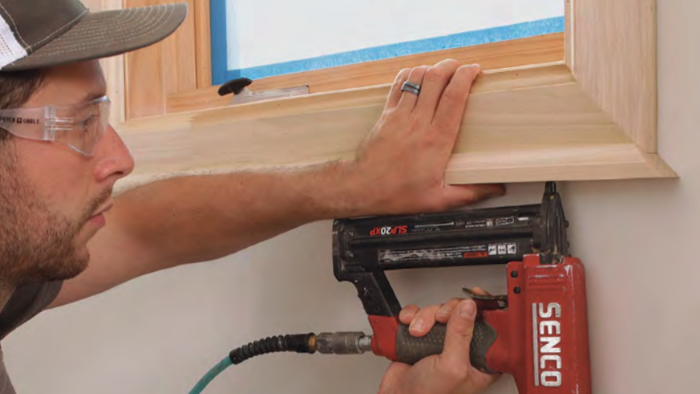
If you're a carpenter or an avid DIYer, it's likely that your projects often include the installation of window and door trim. Though casings around openings can be some of the simplest trim details to execute, it still takes a bit of finesse to get them to look just right. The primary tasks include accurate measuring and precise cutting so the miter and butt joints fit tight and flush. Accounting for inevitable irregularities in jambs and walls is another common concern. Here, we've compiled articles by several builders and remodelers featuring step-by-step instructions for a number of typical window and door casing styles, so you can learn from the pros before you take on your own trim projects.
-
Baseboard and Crown Molding
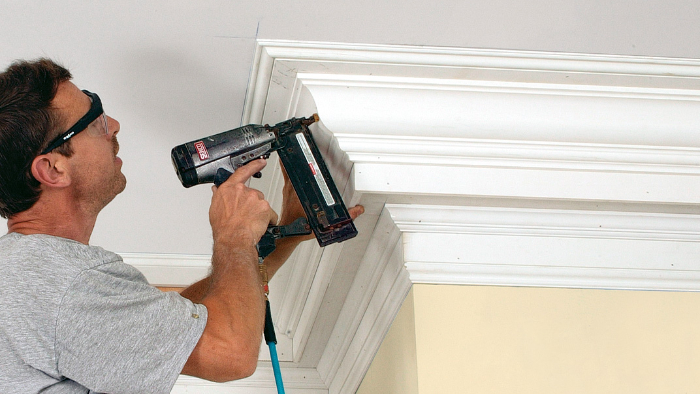
Baseboard and crown moldings create clean, attractive transitions between the floors, walls, and ceilings, and they are often the last carpentry details to get completed before a room is ready for paint. The skills you need to master to make crown and baseboard look great include measuring, cutting, scribing, fastening, making splices, and cutting copes—all of which are covered in the articles in this chapter. Sometimes you will find tricky situations where a baseboard has to transition to a staircase skirtboard or crown molding has to run across a sloped ceiling; we've included how-to articles and videos covering those special cases too.
-
Wainscot and Paneling
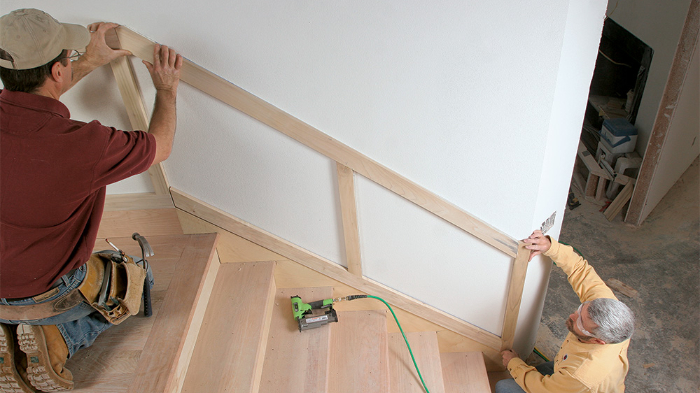
Wainscot—which is paneling that covers the lower portion of a wall—is a popular trim upgrade in traditional-style homes. It can be as simple as vertical beadboard, consisting of tongue-and-groove planks or large sheets of MDF that span between the baseboard and a chair rail, which typically requires only rudimentary carpentry skills to install. More complicated wainscot, which is usually an intricate array of rails, stiles, and inset panels, is more akin to cabinetmaking, and it takes more planning and a finer touch to execute well. No matter which style of paneling you prefer, you will find smart tips and detailed explanations of how to do a professional job of measuring, fitting, and installing it in your home.
-
Mantels and Fireplace Surrounds
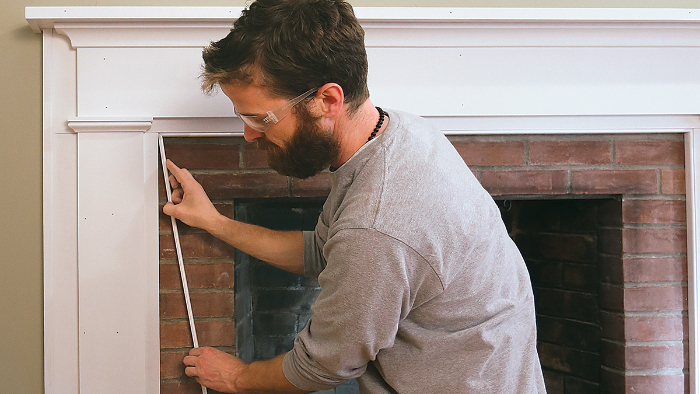
Traditional mantelpieces include the same elements found in facades of classical buildings—such as pilasters, friezes, and cornices—which is why it makes sense to take inspiration from classical rules of architecture when designing your own mantelpiece. To help you plan your own beautiful fireplace surround, this chapter includes articles on mantel design by a few of our favorite architects and designers. You will also find several articles and videos by experienced trim carpenters, each demonstrating their own techniques for creating a mantelpiece as an attractive focal point in any home.
-
Coffered Ceilings
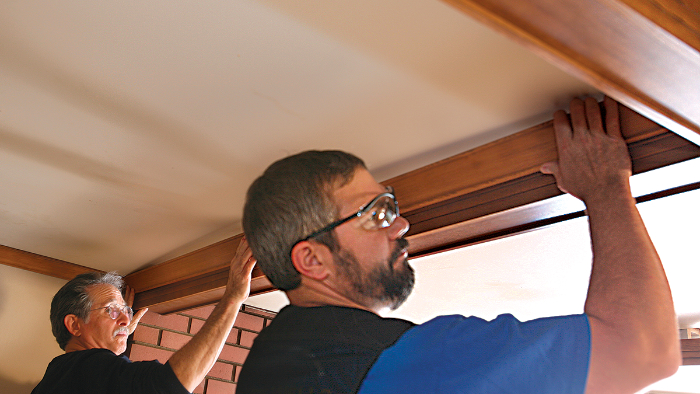
There are few carpentry details that make a room feel more luxurious than coffered ceilings do. These grids of decorative beams can serve practical purposes too, creating chases for wires, providing surfaces for lighting, and dividing a large space into several more intimate ones. Coffered ceilings traditionally are made of solid wood and carefully mitered to fit tightly at every intersection, but creative builders and remodelers have come up with a number of alternative ways to create the beams and to fasten them to a ceiling. There are veneer plywood versions, painted MDF versions, and even one made of EPS foam moldings coated in drywall compound—all of which are detailed in this chapter.
- Home Group
- Antique Trader
- Arts & Crafts Homes
- Bank Note Reporter
- Cabin Life
- Cuisine at Home
- Fine Gardening
- Fine Woodworking
- Green Building Advisor
- Garden Gate
- Horticulture
- Keep Craft Alive
- Log Home Living
- Military Trader/Vehicles
- Numismatic News
- Numismaster
- Old Cars Weekly
- Old House Journal
- Period Homes
- Popular Woodworking
- Script
- ShopNotes
- Sports Collectors Digest
- Threads
- Timber Home Living
- Traditional Building
- Woodsmith
- World Coin News
- Writer's Digest




